Turtles are fascinating creatures that have been kept as pets for years. People often choose turtles as pets because they seem like low-maintenance creatures that stay healthy with little attention, but this is, unfortunately, a myth. They may look hardy and tough on the surface, but most turtles are actually very sensitive to their environment and only thrive when given good care.
Fortunately, there are several species of turtles out there that are relatively beginner-friendly and very suitable as pets for those who want to start caring for reptiles. In this article, we will discuss some of the best turtles for beginners and will provide you with advice on how to care for your pet turtle.
37 Best Turtles For Beginners
1. European Pond Turtle
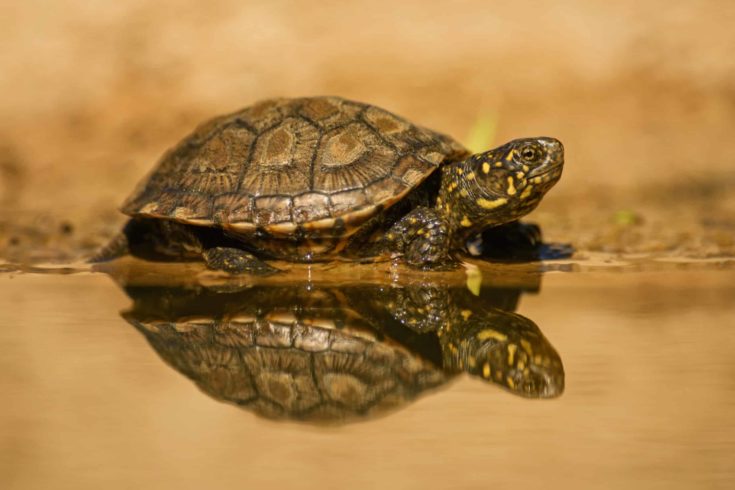
First on our list is a turtle that’s known for being friendly and easy to care for. The European pond turtle, or Emys orbicularis in Latin, is a small species of fresh-water turtle that enjoys interacting with its keepers. They are very hardy creatures with easy-going dietary preferences and will be perfectly content subsisting on a basic omnivorous diet.
Though turtle pellets will work just fine for this species, you can also feed your pet turtles with leafy greens and fruits to provide them with a more varied diet. Since they are omnivores, their diets should contain at least 50% plant-based products and the rest should be made of meaty foods like worms or insects. Don’t be afraid to experiment with a wide range of foods to see which ones your pets like the most!
2. Bog Turtle
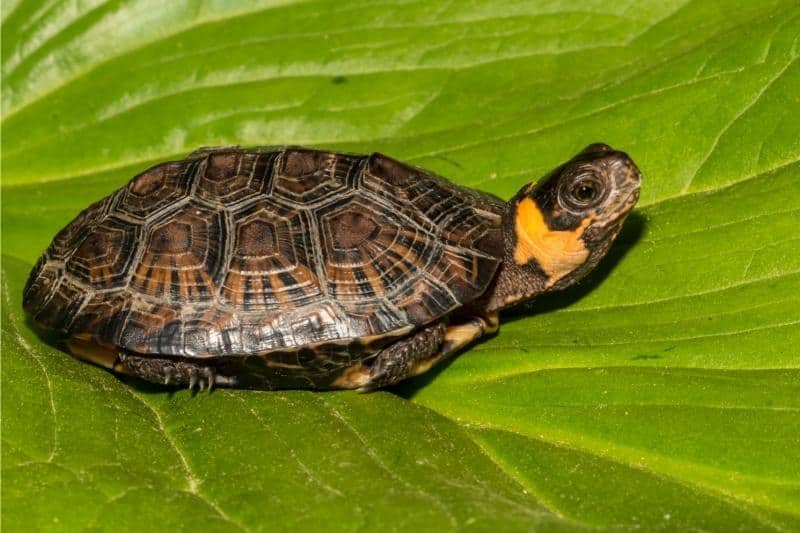
Next on our list is a turtle that’s commonly kept in the United States, the bog turtle, or Glyptemys muhlenbergii. These little turtles are endemic to the eastern United States and can adapt to life in captivity very easily, often becoming tame pets that enjoy physical contact. In addition, the bog turtle is a small species of turtle with an average carapace length of 4.5 inches, making it a great pet for any beginner.
These aquatic turtles naturally inhabit shallow wetlands, so you will need to mimic this environment as closely as possible when keeping them in captivity. Bog turtles should be kept in clean water that’s at least two feet deep, with a water temperature of about 65-75 degrees Fahrenheit. This will allow your pets to grow strong and healthy, which is very rewarding for beginners!
3. Loggerhead Musk Turtle
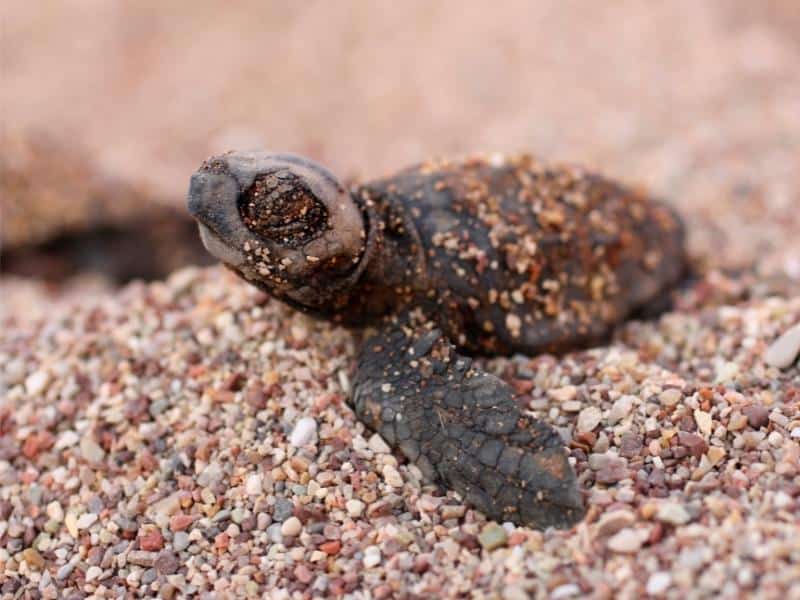
The loggerhead musk turtle, or Sternotherus minor in Latin, is a small freshwater species that originates from North America. These turtles are known for their ease of care, with some individuals even becoming very tame when kept in captivity for a long time.
In addition, these types of turtles have a relatively small size of 5 inches, making them perfect pets for beginners who want to keep aquatic species but don’t have much space. They are omnivores that typically feed on a mixed diet of meat and plants, with turtle pellets or dried insects being ideal options.
4. Pink Belly Sideneck Turtle
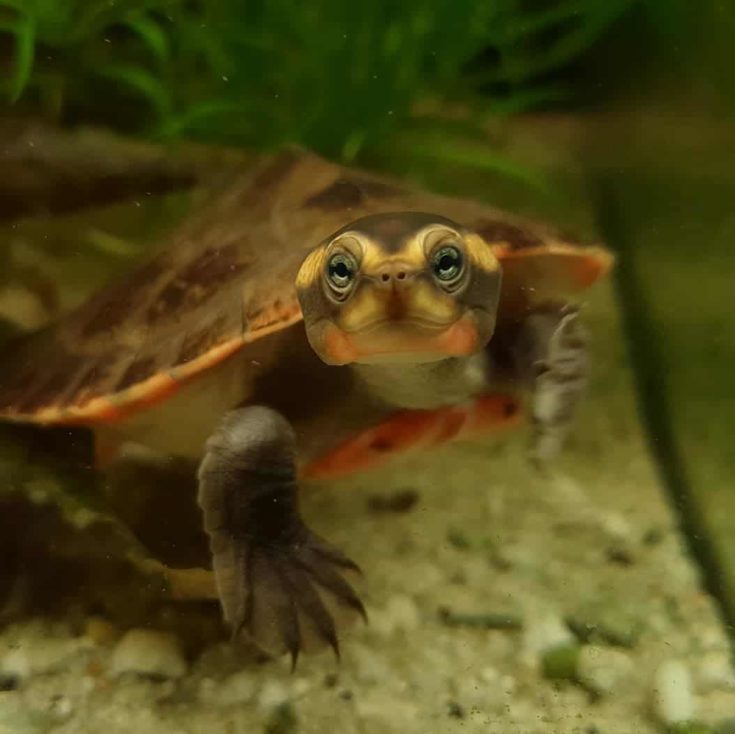
The pink belly side neck is a species of turtle that’s native to Papua New Guinea and Australia, but it also adapts to captivity very well. It enjoys being kept in small groups, so if you have multiple pink belly side neck turtles at home it will be beneficial for them to interact with each other.
Adult turtles of this species have a maximum size of 10 inches for females and 5 inches for males. Turtles of both genders feast on mollusks, algae, and a wide variety of meaty foods in the wild. In captivity, they are non-picky eaters that will generally eat anything that meets their dietary needs. Pellets, freeze-dried foods, and leafy greens are all solid options!
5. Ouachita Map Turtle
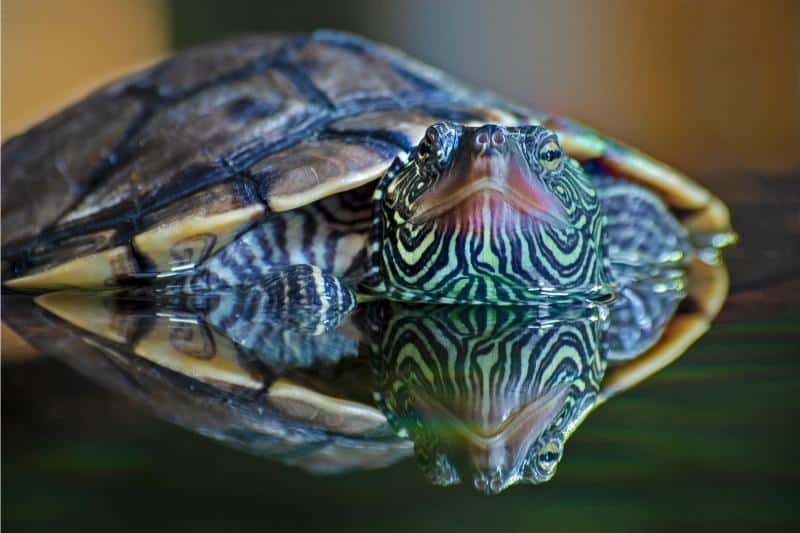
The ouachita map turtle, or Graptemys ouachitensis in Latin, is a small freshwater turtle that’s native to North America, particularly around the Mississippi river system. They are often viewed as good beginner turtles because they adapt well to captivity and are a hardy bunch.
Its enclosure requirement is not too demanding, with a depth of at least three feet and an area that’s 15 square feet in size. The water temperature should be between 75 and 80 degrees Fahrenheit and the habitat should contain plenty of plants and driftwood for your pets to hide in. These turtles are omnivores that primarily feed on plant material like algae and roots, but they will also eat amphipods and other small invertebrates.
6. Northern Map Turtle
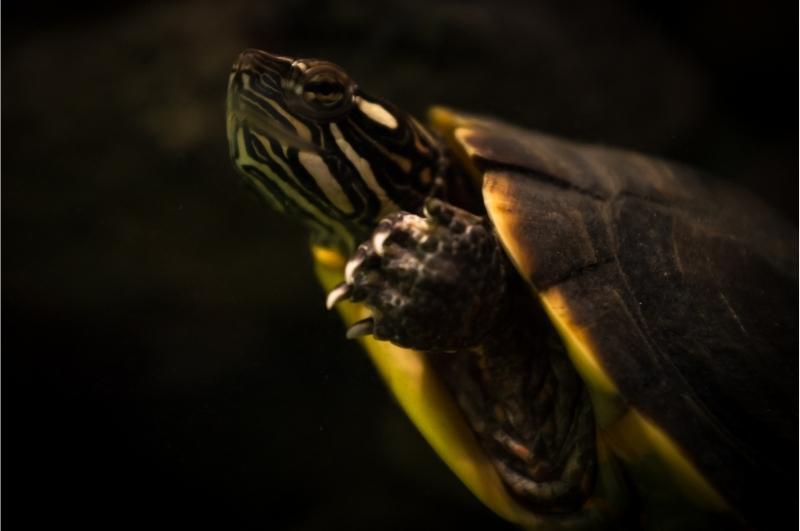
One of the smallest map turtle species is the northern map turtle or Graptemys geographica in Latin. Depending on their gender, these turtles average between 5 to 10 inches as adults, so they’re popular pet turtles for beginners. They’re native to North America and enjoy spending time in slow-moving water bodies like ponds and marshes.
In captivity, these turtle species will require plenty of freshwater with an ideal temperature of around 75 degrees Fahrenheit. As long as these hardy little critters are given proper care, they will grow big and healthy! All they need is a balanced omnivorous diet, a clean turtle habitat, and enough room for them to swim around.
7. Chinese Box Turtle
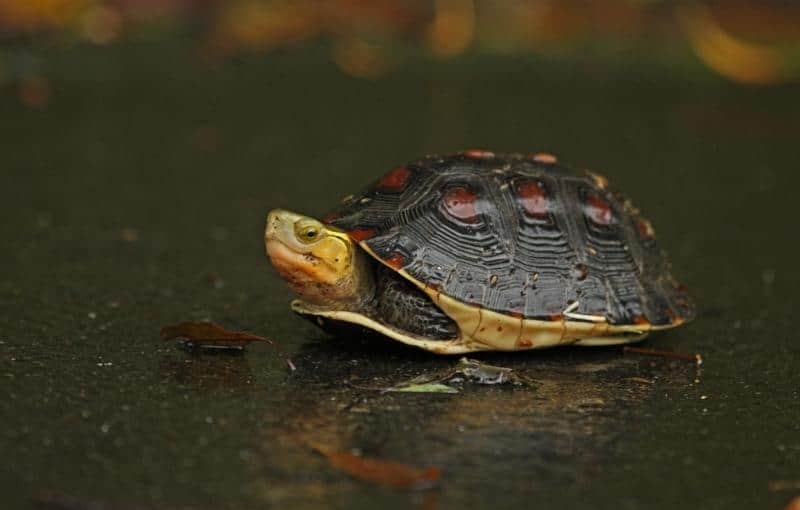
The Chinese box turtle, or Cuora flavomarginata in Latin, is one of several types of Asian box turtles that enjoy being kept as pets. These turtles are named after their ability to retreat fully into their shells and seal up like a box and are commonly used in traditional Chinese medicine for their perceived health benefits.
Adult Chinese box turtles spend lots of time on land and will be most at home in an enclosure with approximately 6 square feet of space. They can be kept in a small pond with shallow waters if they have access to land, or on land with no water feature. When these hardy critters are housed in an ideal enclosure and fed a healthy diet consisting of animal protein and green vegetables, they can lead a long and healthy life of up to 40 years!
8. Desert Box Turtle
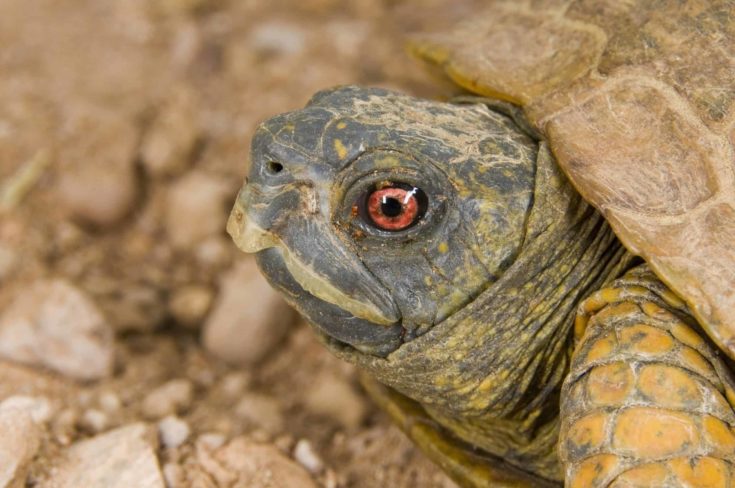
Much like the Chinese Box turtle, the desert box turtle, or Terrapene ornata in Latin, is a beginner-friendly, pet-friendly turtle species that spends most of its time on land. An adult desert box turtle may grow up to 6 inches in length, making it a fairly small and well-mannered pet.
This omnivore feeds on fresh vegetables, berries, algae, insects, crabs, and other invertebrates as part of their natural diet, but also takes fairly well to commercial pellets. Their easy-going nature and diminutive size make them an ideal choice for beginners, which is why they are a common sight in pet stores. Adorable as they may seem, you should always do your research so you can make an informed decision on your pet of choice!
9. Mata Mata Turtle
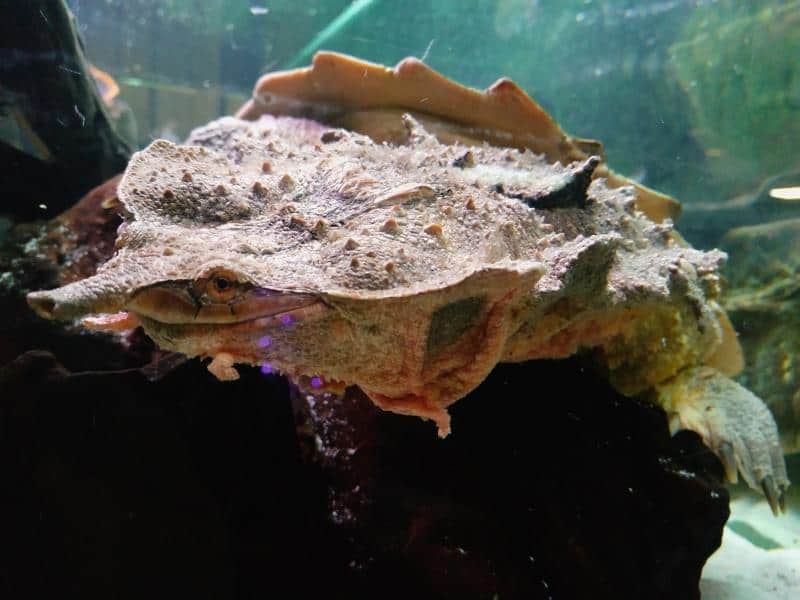
The mata-mata turtle is perhaps one of the largest and strangest turtles you can find in the pet trade. These reptiles feature a triangular, streamlined shell with two elbow-like projections and a ‘humped’ back that gives them their name: matamata is an Amazonian term that literally means “one who kills”, because of these creatures’ deadly jaws.
These unique creatures can grow up to 18 inches in size, making them one of the largest beginner tortoises you can find in the pet trade. However, they are mostly sedentary and terrestrial, which means that even those who live in temperate regions can keep one as a pet. Just remember that these turtles are carnivorous, which means you will need to feed them a varied diet of different protein sources!
10. Chinese Softshell Turtle
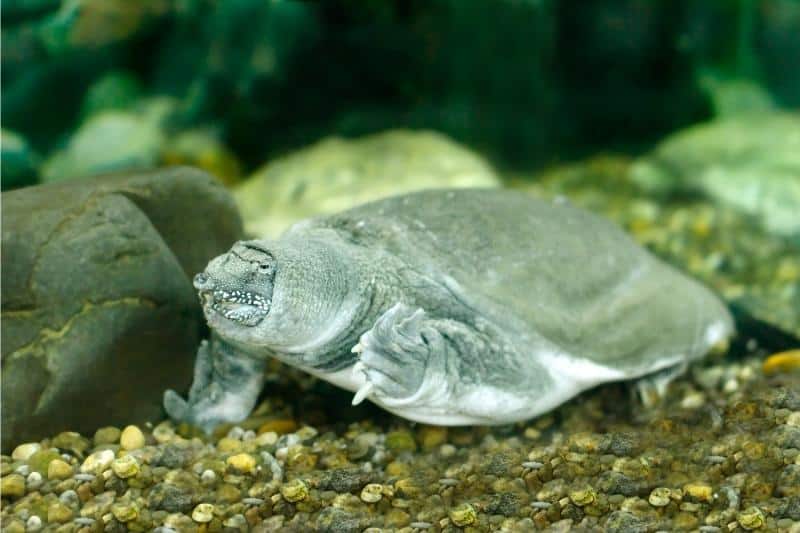
They may look alien-like, but the Chinese softshell turtle is a fully-aquatic species that can grow up to 10 inches in length! These adorable turtles feature beautiful patterns on their shells and are well-known for their ability to shoot jets of water. The Chinese softshell turtle is a fearless swimmer that loves being petted, so it makes an excellent choice for beginners!
These turtles are primarily carnivorous, feeding on live fish and clams in their natural habitat. When keeping them as pets, however, they will do just fine on pellets made up of animal blends, or typical varieties of animal food sources such as insects and worms.
11. Florida Softshell Turtle
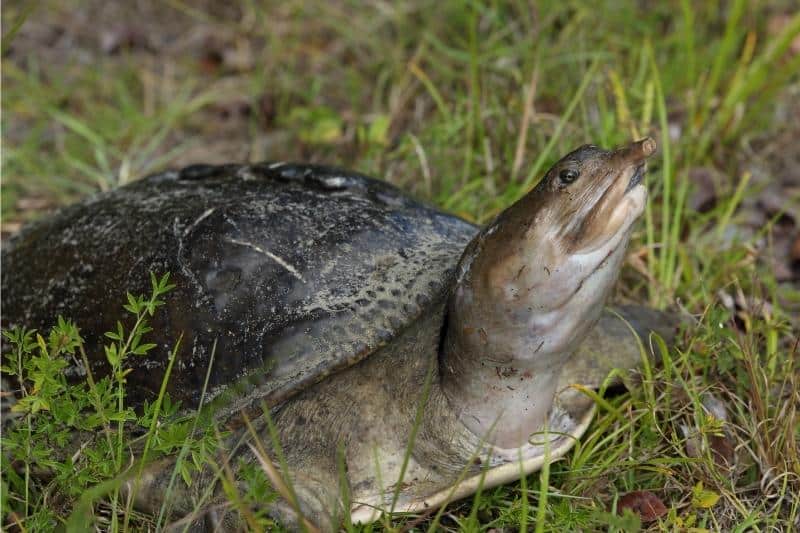
Beginner turtle enthusiasts who are looking for an aquatic pet that is known to bond with its keeper should look no further than the Florida softshell turtle, Apalone ferox, which can grow up to 12 inches in size.
These turtles are blessed with a flat, streamlined shell perfect for swimming through the waters, and an extraordinary ability to detect underwater vibrations. If you are planning to keep a Florida softshell turtle as a pet, expect it to develop an exceptionally strong bond with you!
12. Spiny Softshell Turtle
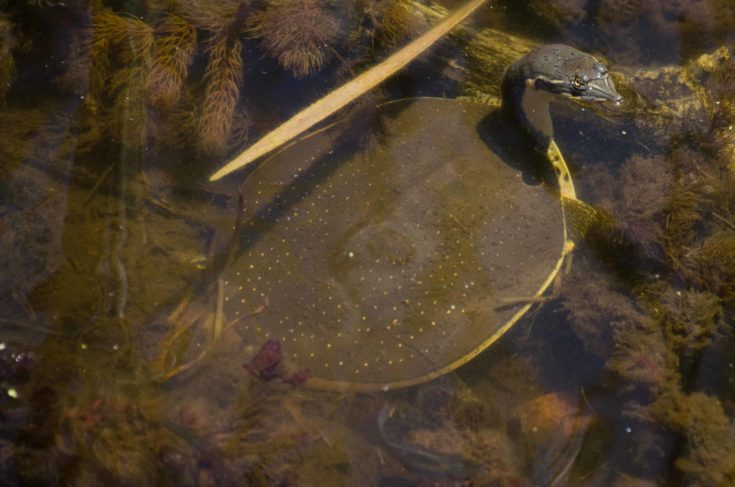
Beginner turtle keepers rejoice! The spiny softshell turtle makes an excellent pet if you’re looking for a companion with a lengthy lifespan. These cautious turtles have been known to live for over 50 years in captivity, so you can be sure that your pet will be with you for a long time!
One thing to keep in mind is that they are one of the largest freshwater turtles on our list. These turtles can grow up to 20 inches in size, which means they will require a minimum tank size of 75-100 gallons. However, if you’re one of the lucky few who are able to care for them properly, these turtles will reward you with a long life filled with companionship!
13. Spotted Turtle
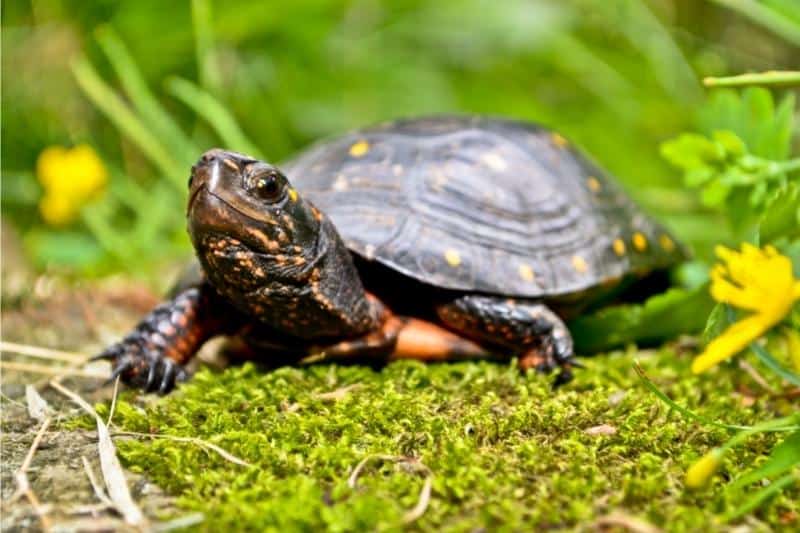
With a maximum length of 5 inches, the spotted turtle is yet another popular species of beginner turtle. This freshwater species thrives on an omnivorous diet, which means it can be fed a diet of live fish, frozen items such as brine shrimp, and even vegetables. In fact, this is one of the few turtle species that have been successfully kept on high vegetation diets!
In terms of care requirements, keep in mind that spotted turtles are semi-aquatic – they prefer a mixture of aquatic and terrestrial habitats. A varied diet of both live and frozen items, along with access to a nice basking spot, will keep your spotted turtle nice and happy!
14. Yellow Mud Turtle
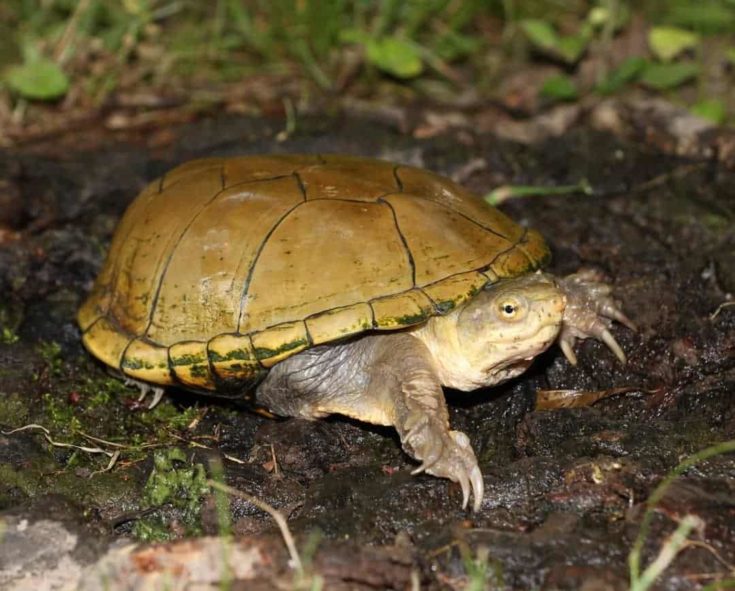
The yellow mud turtle sure is an odd one! Though these creatures are mainly carnivorous, they do occasionally enjoy feasting on duckweed.
What does this mean for aspiring owners of these unique pets? You should expect to feed them a mixed diet of various protein sources such as earthworms, crickets, feeder fish, shrimp, and even beef heart. Occasionally, feel free to drop a piece of romaine lettuce into their tanks for a nice little treat!
15. Striped Mud Turtle
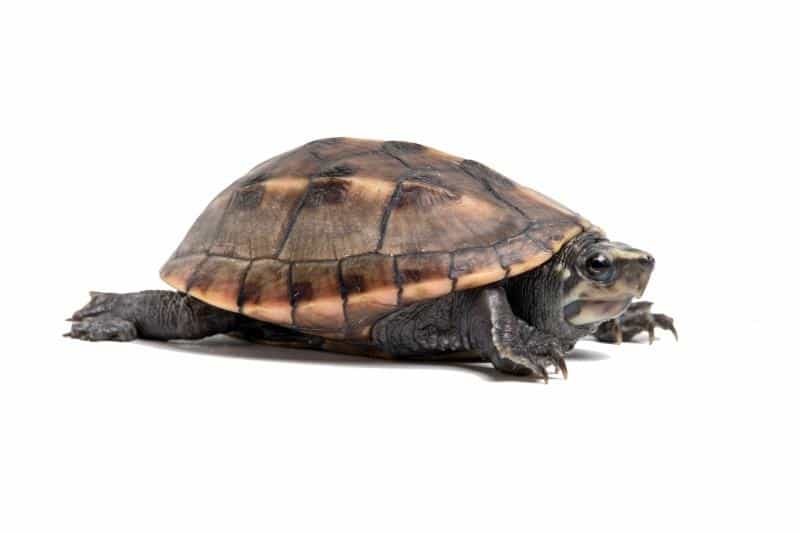
Named after the yellow stripes that run down their neck and head, the striped mud turtle is a stocky, brown-colored species of turtle. These hardy reptiles can reach up to 4 inches in length as adults and will make perfect pets for beginners working with a limited amount of aquarium space.
Most aquatic turtle diets will work fine with the striped mud turtle, but keep in mind that they will also eat land-dwelling invertebrates such as earthworms and grubs found under decaying logs. These omnivores will enjoy a wide variety of aquatic turtle food, ranging from pellets to live earthworms and fresh veggies.
16. Diamondback Terrapin Turtle
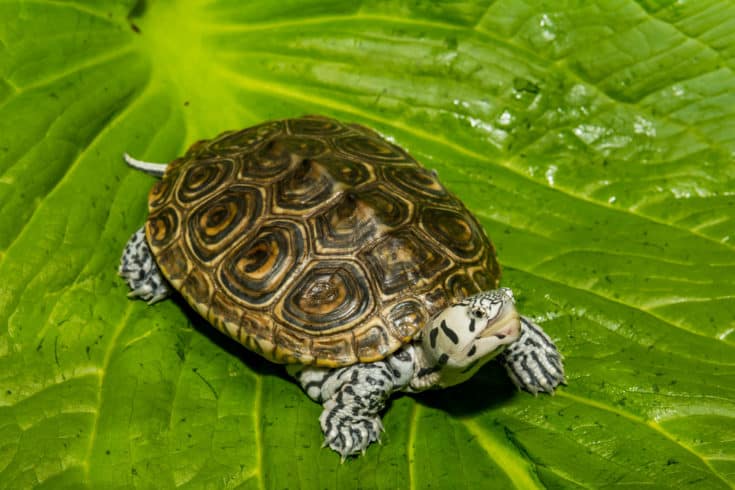
As far as aquatic animals go, the diamondback terrapin turtle is perhaps one of the most unique. Native to the Southern part of the US, these critters are accustomed to warmer temperatures and high humidity levels. For their owners, this means that they will need to maintain an average enclosure temperature of around 80 degrees Fahrenheit.
This species of turtle is named after the diamond-shaped pattern on its shell, which is an olive green color with darker brown markings. The diamondback terrapin has relatively basic care requirements and will be happy on a typical omnivorous turtle diet. Throw in some brackish water for good measure, and they’ll feel right at home!
17. Reeve’s Turtle
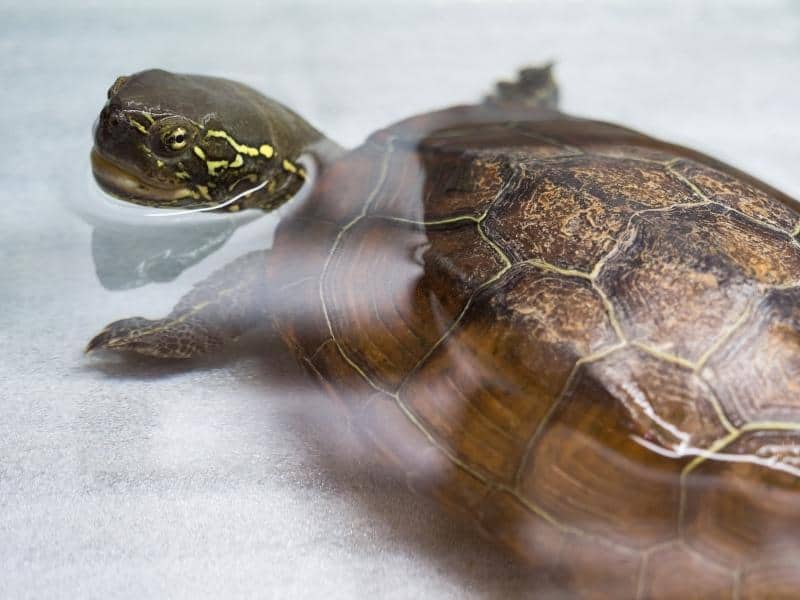
With a dark green, almost brown color, the reeve’s turtle is a medium-sized turtle commonly found in North America. They’re very similar in appearance to another aquatic pet – the painted turtle.
These turtles have average life spans of up to 30 years, and while they’re not quite as long-lived as many of their reptilian cousins, they will still prove to be extremely durable captives that requires relatively low maintenance.
18. Ornate Wood Turtle (Painted)
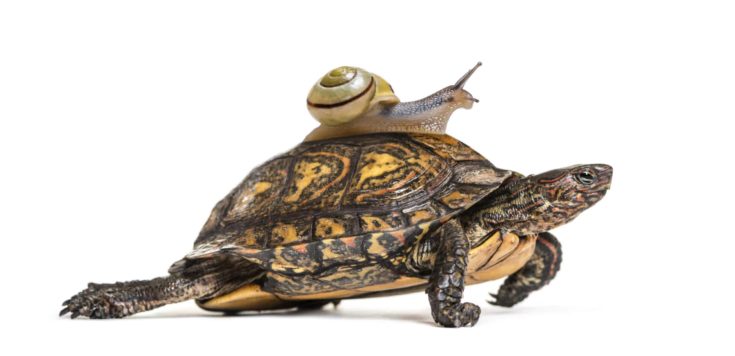
Much like the other aquatic turtles mentioned in the article, the painted wood turtle is a hardy, low-maintenance reptile that’s a perfect pet for any beginner. This gorgeous reptile features prominent brown spots and bold stripes on its body, as well as black color patterns that resemble paint.
These turtles are best kept in slightly larger tanks, with a water depth of at least 8 inches. When keeping them in plastic tubs or other somewhat shallow containers, be sure to provide plenty of substrate for burrowing activities. If the habitat is too shallow or lacks suitable hiding areas, these turtles may just decide to stop feeding altogether!
19. Razorback Musk Turtle
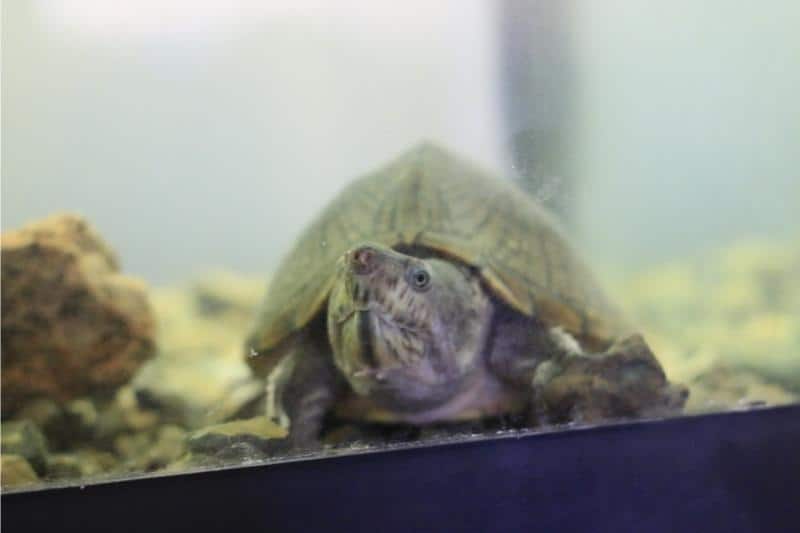
Named after the sharp spines found along their backs, the razorback musk turtle is a species of aquatic turtle that’s native to North America.
These turtles are fairly secretive animals and prefer to live in shallow freshwater bodies where they can easily escape from predators by hiding under submerged logs or rocks. They’re known for being more reclusive than most other aquatic turtle species, so you should provide them with plenty of hiding spots.
20. Common Musk Turtle (Stinkpot)
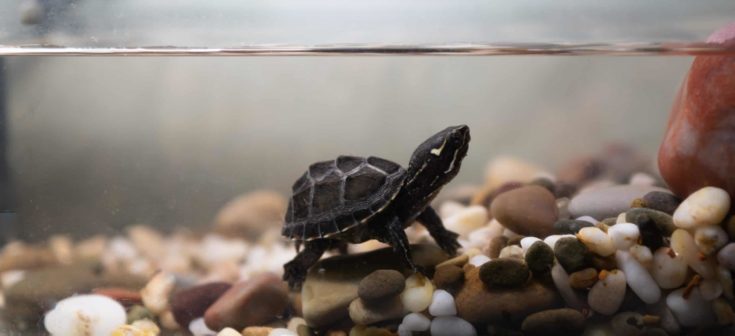
How adorable is this nickname? The common musk turtle, otherwise known as the stinkpot, is named after the scent glands found on the edge of their shells. These turtles are relatively small, reaching no more than 5 inches in size, and have dark green or black colorations on the top of their shell.
The common musk turtle is not a picky eater and enjoys a variety of foods such as aquatic plants and meat-based items like brine shrimp and tadpoles. They’re also known as prolific baskers, so be sure to provide them with an area where they can enjoy the sun’s rays on their backs!
21. African Sideneck Turtle
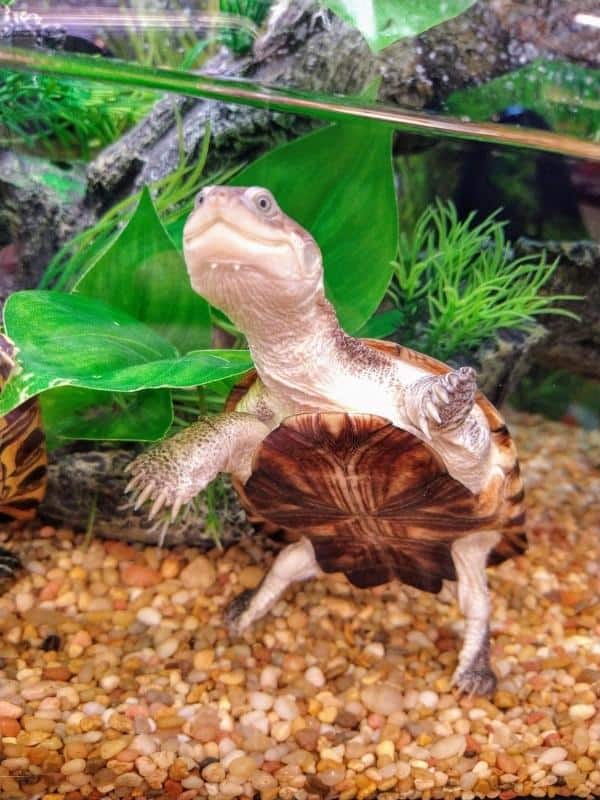
The African Sideneck turtle wouldn’t make a list of the biggest pet turtles, but it is certainly on the larger end of the spectrum. Females can reach up to 12 inches in length, so beginners intending to keep groups of these turtles together should do so in larger bodies of water. A 125-gallon tank is recommended in such situations.
One essential piece of tank decor you should prepare is a basking spot. African sidenecks love swimming, but need a place to dry off. They will be happiest when they have access to water with lots of basking spots!
22. Mississippi Map Turtle
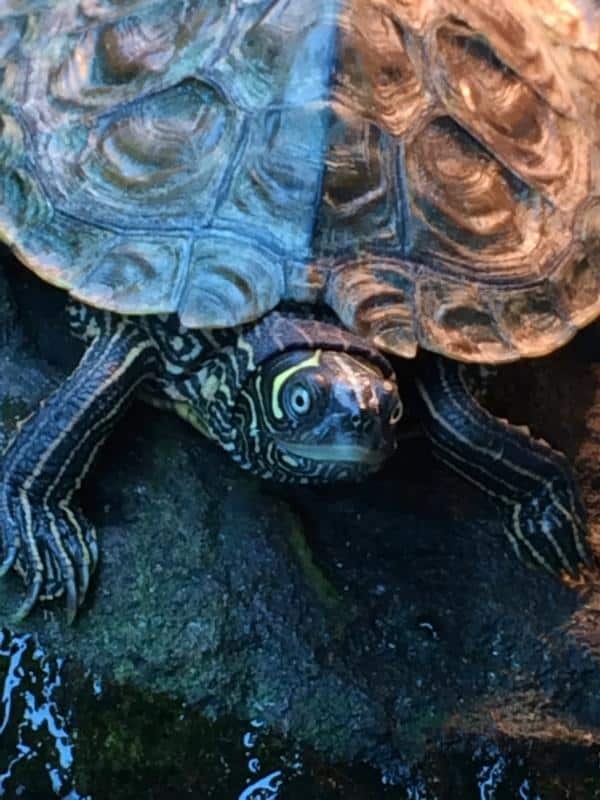
As you might have guessed, the Mississippi map turtle is a native of the U.S. Southeast, where it can be found in river basins from Georgia to Louisiana. These turtles are perfect for beginners looking for pets on a budget since they require very little space and have a high rate of survival in captivity.
Though they may not require lots of water, it is essential to keep their habitats clean and comfy. With its smooth shell and unique upper jaw, the Mississippi map turtle is one of the most interesting-looking turtles found in freshwater habitats.
23. False Map Turtle
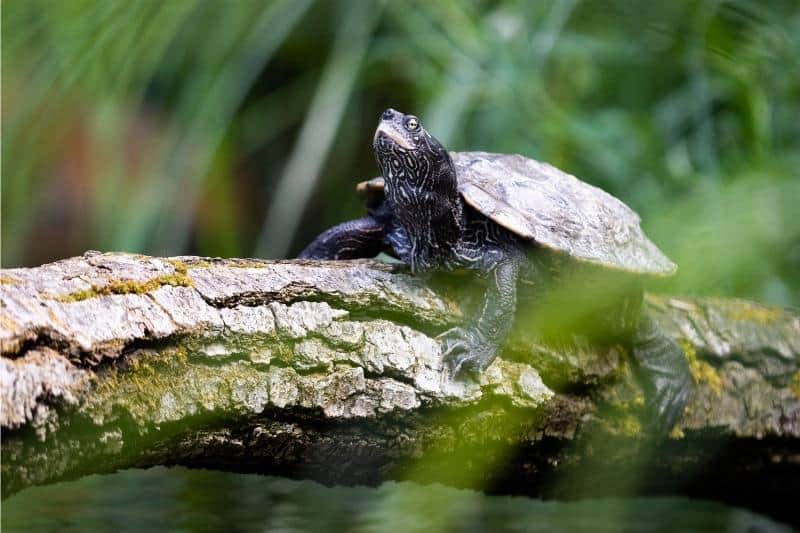
Why not keep two species of map turtles in the same tank? The false map turtle is a slightly larger version of its cousin, with adults reaching up to 11 inches long. Males are typically smaller than females, but both sexes have beautiful carapaces with shell patterns that make them easy to identify.
These turtles are semi-aquatic animals that enjoy spending equal amounts of time in the water and on land. They don’t require huge enclosures but should be kept with at least one other false map turtle for company.
24. Midland Painted Turtle
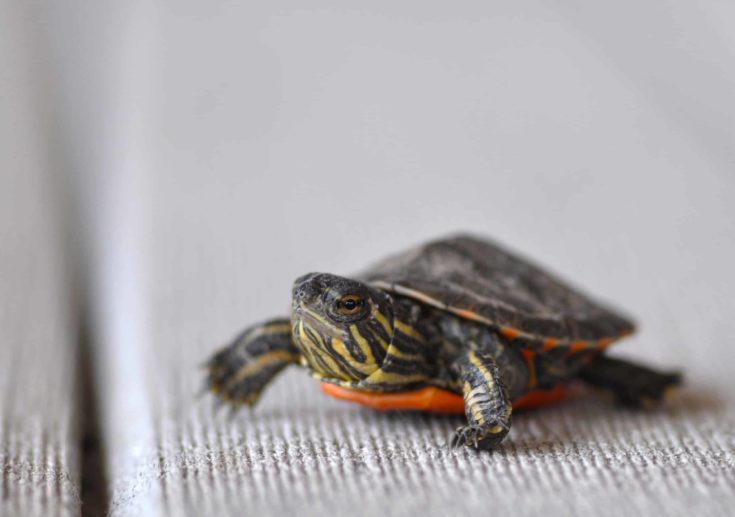
Painted turtles are a large group of basking turtles found throughout the U.S. and Canada. The midland painted turtle is a small species that features a red carapace with a lighter colored stripe down the middle. Hatchlings have similar markings, but instead feature dark bars on each scale in addition to the bright stripes on their edges.
The midland painted turtle is a unique species that live in warm areas and can usually be found in quiet, calm bodies of water. They’re small enough to make the perfect companion pet, but beginners should take the time to learn about their highly specific needs.
25. Southern Painted Turtle
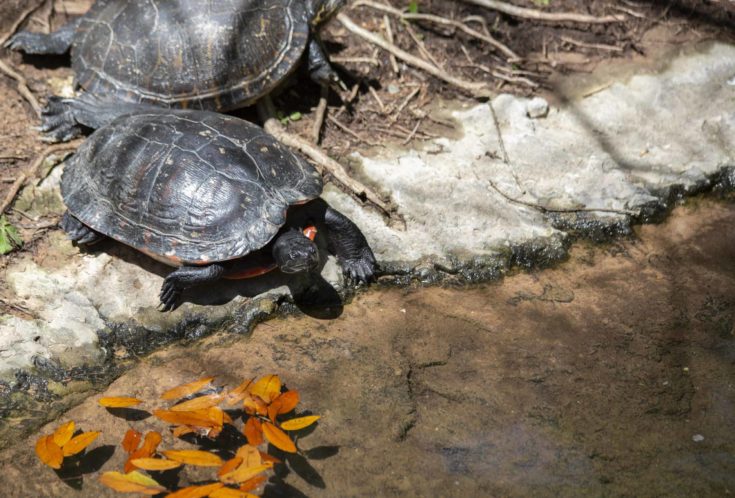
Small, brightly colored, and beautiful – all words that apply to painted turtles. The southern painted turtle is native to the southeastern U.S., where it lives in rivers, ponds, and ditches along the coast. It can even be found in brackish habitats like swamps and mangrove forests!
As you might expect, this species is a climber and a basker, but may also spend a decent amount of time swimming. Since they favor shallow-water habitats, it is important to make sure their tank has plenty of both options for them to enjoy.
26. Eastern Painted Turtle
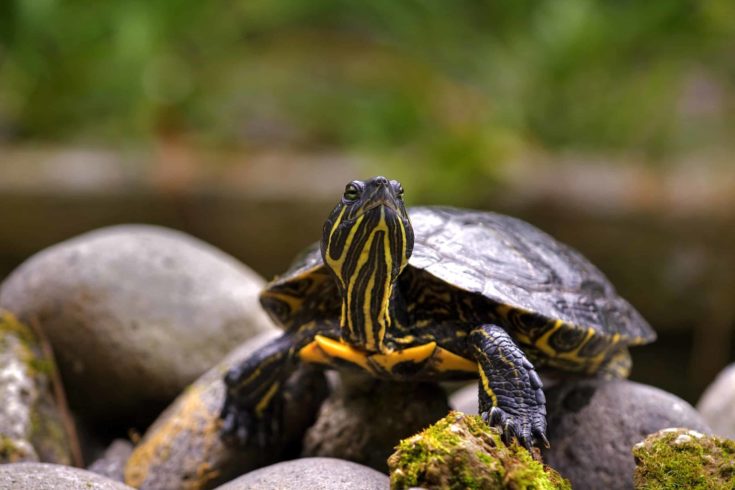
Eastern painted turtles are one of the most commonly kept species in the world, but they’re still unique enough to keep any reptile lover entertained. They’re small turtles, but develop interesting patterns on their carapaces as they grow. Young painted turtles are often brightly colored with yellow stripes, but the base color of adults can range from brown to black or even green depending on where they live.
These semi-aquatic animals love spending time basking on logs and swimming around in their water habitats, so make sure they have plenty of both options in order to stay happy!
27. Western Painted Turtle
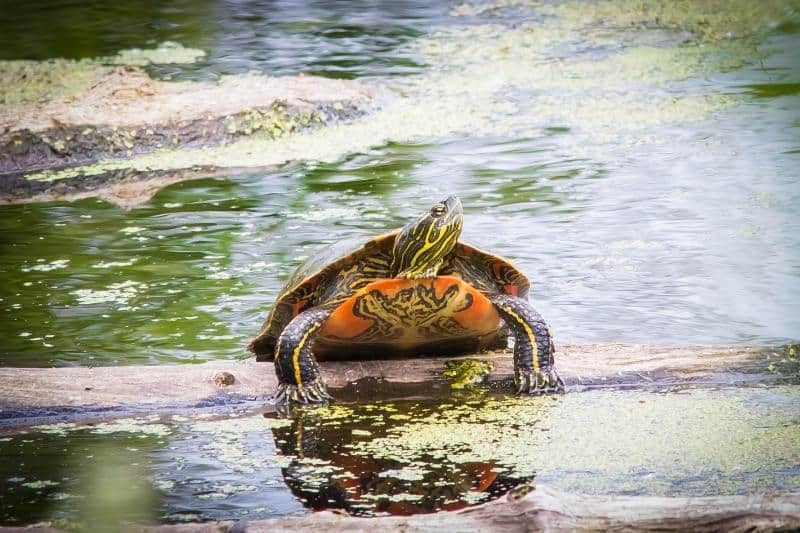
Western painted turtles are small and hardy, making them a great choice for beginner herpetologists who want to add new members to their families. These reptiles are native to the Pacific coast of North America, so they love warm habitats with sandy or rocky bottoms and plenty of basking spots high in the water.
Adult painted turtles have very colorful shells which range from red, orange and yellow to deep browns and blacks – all depending on where they live! Young painted turtles feature lighter colors and striking yellow stripes, but as they mature their shells darken to resemble those of adults.
28. Ornate Box Turtle
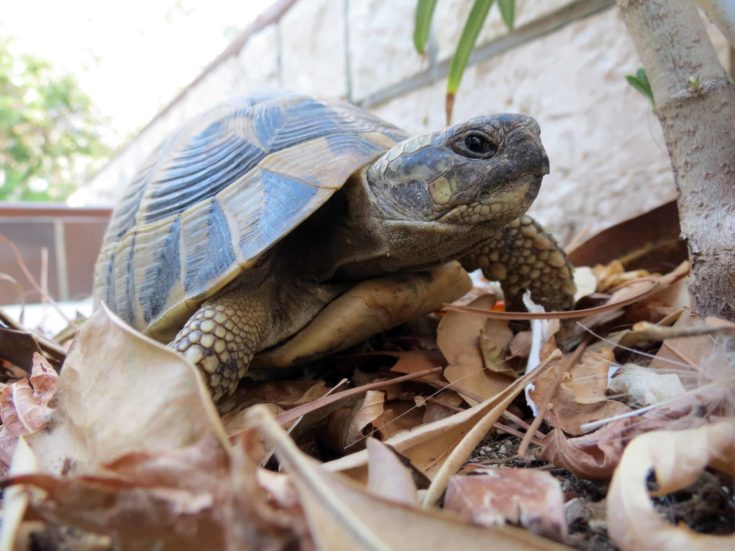
Ornate box turtles are known for their large, colorful heads and striking yellow or orange coloring. These small turtles come from central Texas to Kansas and all the way down to Mexico, where they typically live in wet habitats like marshes and riverbanks.
Adult ornate box turtles grow quite large, but make sure not to let this little species fool you! Though they’re big turtles by pet standards, ornate box turtles are highly active and love swimming around their water tanks.
29. Gulf Coast Box Turtle
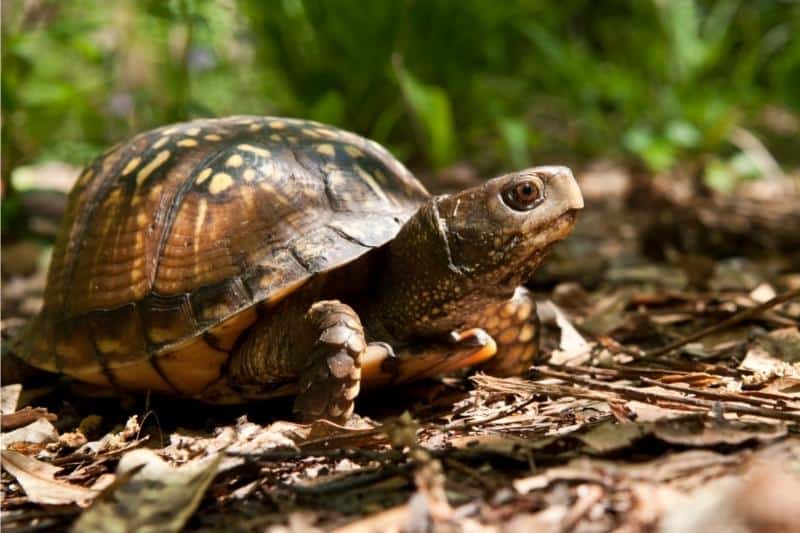
Gulf coast box turtles are one of the most popular species for beginner herpetologists, and it’s easy to see why! These large turtles have striking yellow or orange heads which contrast nicely with their brown shells. They’re native to Texas, Louisiana, Mississippi, and Alabama in the U.S.A., where they live in various habitats including forests and swamps.
Adult gulf coast box turtles can grow to be very large, but they’re also highly active and love swimming around in open water habitats. They might even climb onto logs or rocks to bask at the water’s surface!
30. Three-Toed Box Turtle
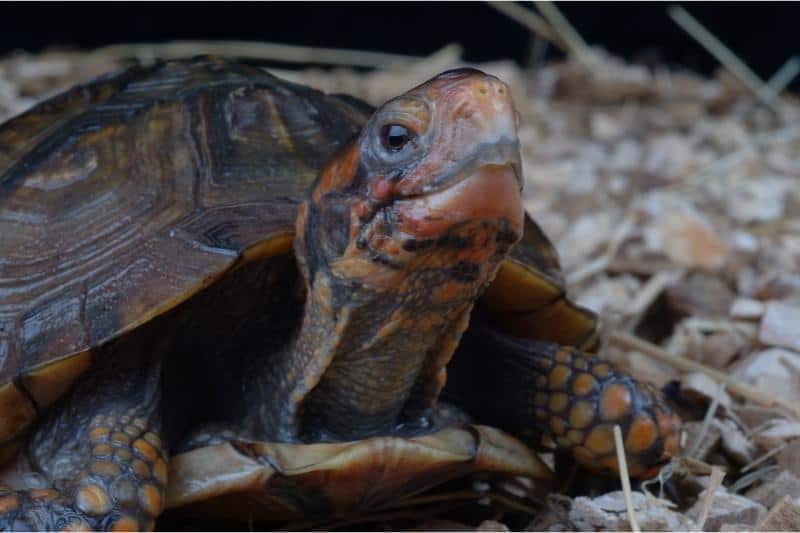
A turtle with three toes? Yes, it’s possible! Most turtles have four webbed toes on their front legs and four on their back, but three-toed box turtles only grow the last three digits of that number.
These small turtles are native to North America, where they live in various habitats including forest clearings and grasslands. Fortunately for herpetologists living in colder climates, three-toed box turtles can survive quite well in indoor habitats as long as they have heating lamps and UVB lights to provide the appropriate sunlight.
31. Eastern Box Turtle
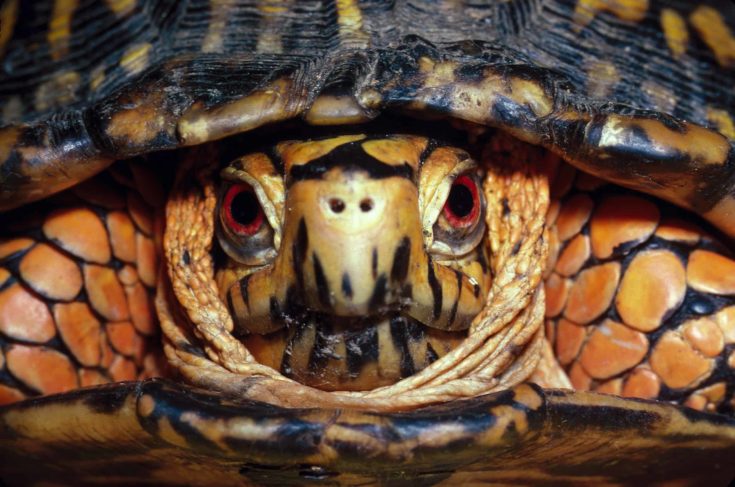
Eastern box turtles are known for their beautiful, high-domed shells and striking orange heads. These small turtles live all across North America – from Florida to New York and California to Texas. As far as habitats go, eastern box turtles can be found in a wide variety of locations including bogs, grasslands and forest clearings.
Adult eastern box turtles are highly active, but they’re also skittish. They typically avoid human contact by hiding out under logs or burrowing into the soil – though they will emerge for food!
32. Yellow-Bellied Slider
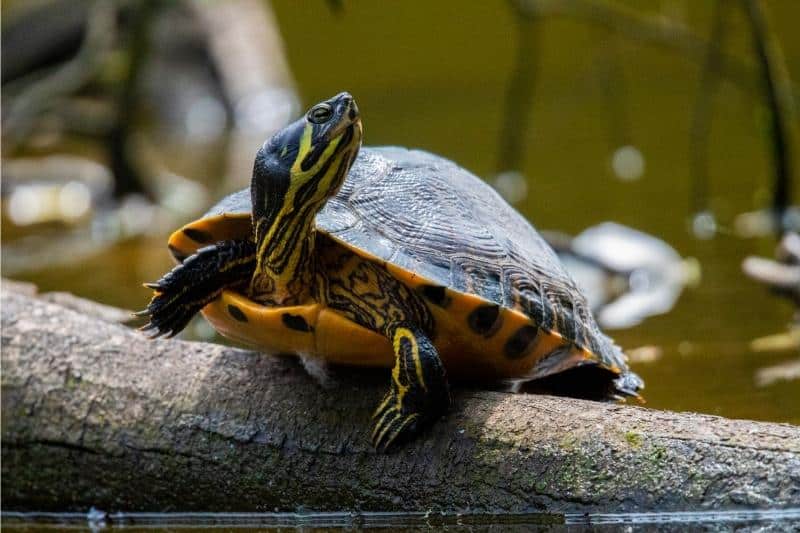
Like the red-eared slider, yellow-bellied sliders have striking, colorful heads. They get their name from their bright yellow or orange underbellies which are only visible when they’re basking on logs in the water!
These medium-sized turtles are native to North America and can be found all across the continent – from Florida to California and North Carolina to Saskatchewan.
Yellow-bellied sliders are known for constantly basking on logs in open water habitats, so they require plenty of room to swim around!
33. Red-Eared Slider
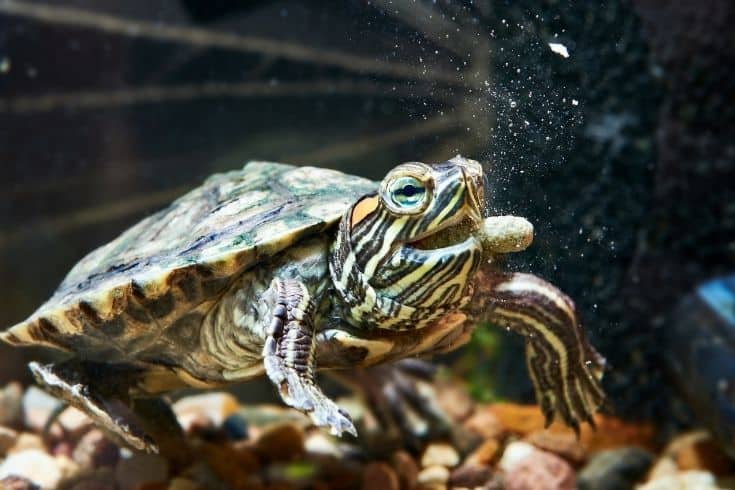
The red-eared slider is probably one of the most recognizable turtle species in the world. It’s famous for its vibrant green, orange or yellow head with a striking red line around each eye.
Red-eared sliders are native to North America and can be found all across Texas, Oklahoma, and Louisiana to New Hampshire, Connecticut, and Florida! These medium-sized turtles are easy to care for, so feel free to head on over to your local turtle rescue and adopt one today!
34. Wood Turtle
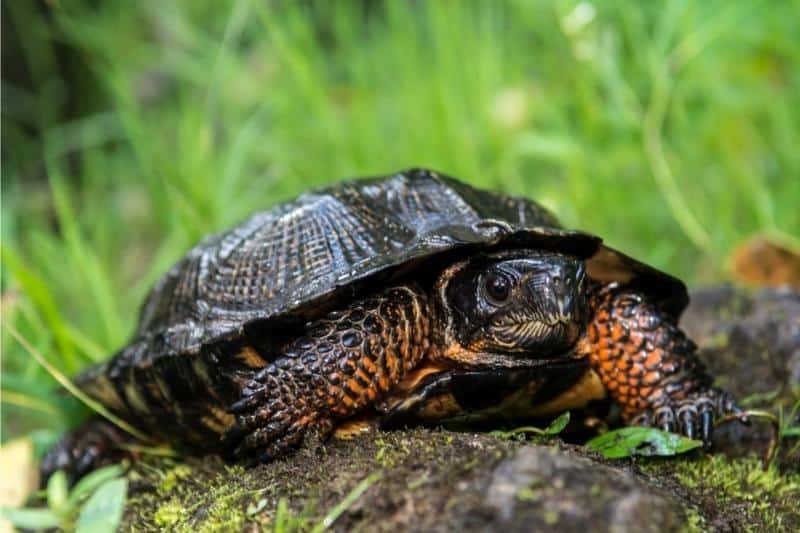
Though it may not look like much, the wood turtle is an incredibly hardy species! Its striking yellow head and light markings along its shell make it easy to spot in open water habitats.
These small turtles are native to North America and can be found all across the continent – from Florida to New York and Texas to Manitoba! They’re most active at night and spend their days hiding out under logs or burrowing into the soil. These turtles are very active, but they’re also quite shy – so make sure that your habitat provides lots of interesting little nooks and crannies for them to hide in!
35. Gibba Turtle
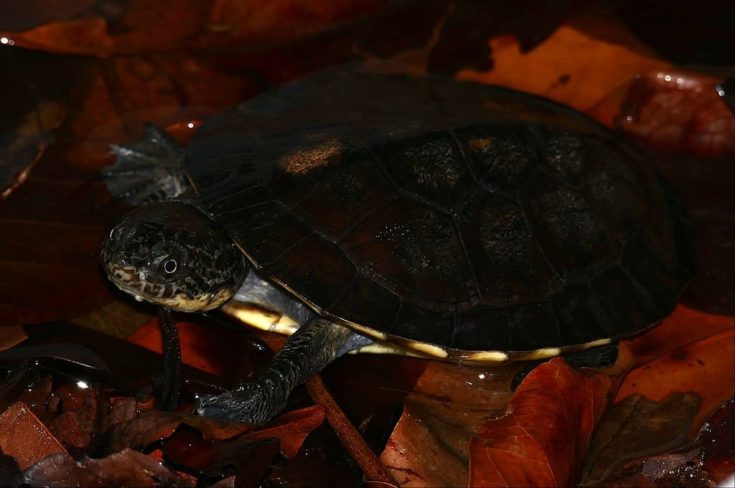
These small turtles are well-known for their bumpy shells and squat appearance. Their vibrant green and yellow coloring and long, tapered head make them easy to spot in open water habitats like swamps and marshes.
Though they’re not picky when it comes to water quality, gibba turtles are very sensitive! Make sure that your habitat features few fluctuations in temperature and pH levels. The best way to do so is with the help of a good filter. Check out our top canister filters for turtle tanks if you’re looking for more information on the best filters you can get!
36. Common Snapping Turtle
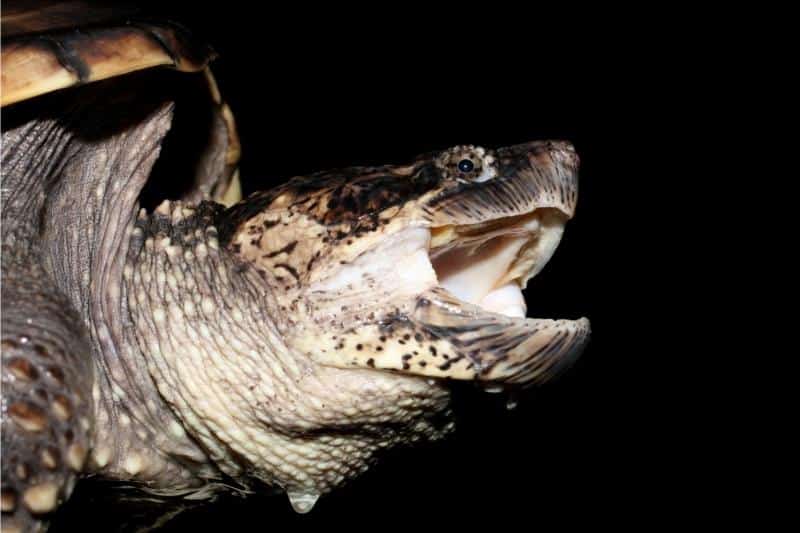
As its name would suggest, the common snapping turtle loves to live near water! Make sure its tank setup has a large basking area with plenty of logs for it to hide under, as well as an adjacent shallow swimming area.
These large, heavy-bodied turtles might look imposing, but they’re actually very docile. The only time you’ll see snapping turtles get aggressive is when their nesting season rolls around in late spring! At that point, you will have to separate the male turtles from the females so they don’t injure each other.
37. Pink-Bellied Side-Neck Turtle
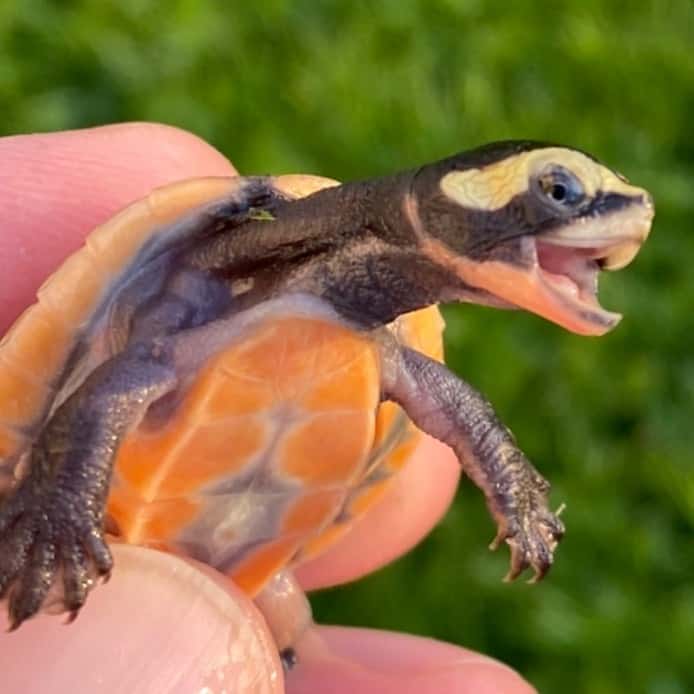
Last but not least, we have the pink-bellied side-neck turtle! These curious little fellows love to hide out in small caves and crevices during the day, then emerge at night to search for food.
These turtles are native to Papua New Guinea and parts of Australia, but if you live in a warmer climate, your turtle might be lucky enough to breed! Side-neck turtles are relatively hardy, but they’re also known for being skittish. Be sure to make their habitats less chaotic and more comfortable to help them feel safe!
What Makes A Turtle Beginner-Friendly?
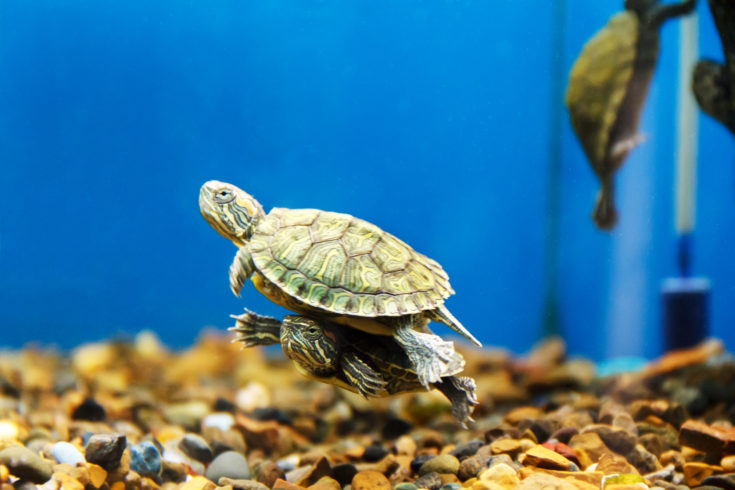
Before delving into our list of beginner-friendly turtles, we need to consider what it means to be a beginner-friendly turtle. This is not as straightforward as it appears and there are some commonly agreed traits of beginner-friendly turtles:
They Should Have Moderate Requirements
Some turtles require very specific conditions for them to thrive and only the most experienced keepers can provide such care, meaning that turtles with these requirements are unsuitable for beginners. This is why we only chose turtles that require moderate to loose requirements, so you won’t need to be an expert turtle keeper before you can provide good care for your pet.
They Require Minimum Setup Time
A lot of turtle tanks look like a disaster waiting to happen right after you buy your pet. We wanted our list to be composed of turtles that require very little setup time, so you won’t need to spend money right after bringing your turtle home. Stocking up on the necessary equipment for keeping your pet turtle will take some time but much less than setting up a full-blown aquarium tank.
They Should Be Hardy & Disease-Resistant
As we said before, turtles can often seem like low-maintenance pets because they appear to be strong and hardy. However, they really aren’t and many turtle species can become ill quite easily. This is why it’s very important to buy a turtle species that is both disease-resistant and naturally strong enough not to catch any infections.
They Should Be Sociable
Some turtle species have a reputation of being solitary creatures that don’t interact with their keepers while others are very social. If you want to enjoy your time with your pet, it’s important for us to choose turtles that are sociable and friendly towards people so you can handle them without worrying. More importantly, if the turtle is safe to handle then it’s much more fun.
All of the turtles on our list are very suitable for beginners thanks to their good temperament and relatively easy care requirements. They may not be perfect turtles, but they make up for it with other positive traits. Without further ado, let’s take a look at our list of the best pet turtles for beginners!
Conclusion
So there you have it – a list of the best turtles for beginners! These small, hardy, and fun pets will provide years of entertainment and companionship. All you need to get started is a good tank, fresh water and food, and of course, your new turtle friend! And don’t forget to give it lots of love and care!
Did you enjoy this article? We’re so glad to hear that! Please feel free to share this article with someone who is considering adopting a turtle as a pet, and let us know in the comments section if you have any thoughts or feedback! Thanks for your support, and happy turtle-keeping!
